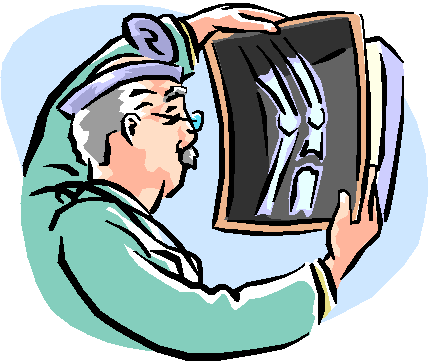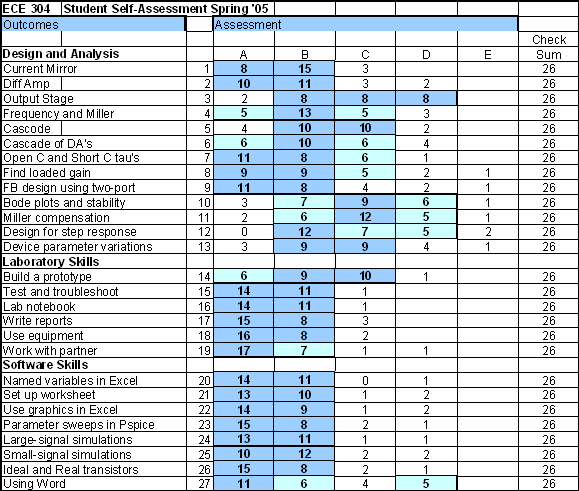Home
Page:
ECE 304
Outside Links
Outside Links
............................................
Course Syllabus and Lab Handbook
(Right-click on Hyperlink and Save Target As to load to disk)
(last updated Wednesday, December 06, 2006 )

An "X-Ray" of the course:
Link to ABET page
Link to Department Syllabus
Link to Lab Handbook
Course Goals:
On completion of the course, the aim is that a student be able to do the following:
A.
Design and Analysis
1.
Design a current
mirror to meet specified compliance voltage, AC ripple requirements, etc.
2.
Design
differential amplifiers using active or resistive loads to meet large-signal
swing and small-signal gain specifications
3.
Design output
stages to meet power delivery, efficiency and heating specifications
4.
Relate capacitance
in devices to the frequency performance of circuits, including the Miller effect
5.
Use multiple stages (like the cascode, or voltage
follower input and output stages) to avoid frequency limitations
6.
Design a cascade
of differential amplifiers that meets large signal and gain requirements
7.
Use the methods of
open- and short-circuit time constants to estimate bandwidth
8. Determine the loaded gain of a feedback amplifier using two-ports
9.
Design the four
types of amplifier (voltage, current, transconductance and transresistance),
based upon two-port theory and T-section resistor feedback networks
10. Relate feedback to
frequency performance and stability using Bode plots
11. Design a stable circuit using Miller compensation
12.
Design a feedback amplifier for a Butterworth step response
13.
Design circuits to work for a range of device parameter variations
B.
Laboratory skill
14.
Build working
circuit prototypes
15.
Test and
trouble-shoot a prototype
16.
Keep lab notebooks
using standards required for use in a patent dispute
17.
Write clear technical
reports that meet professional standards
18.
Use a variety of
measurement instruments and techniques
19.
Work closely with a
colleague
C.
Software skills
20.
Use named
variables in Excel to implement
formulas of hand analysis
21.
Set up Excel
worksheets that explore different parameter dependencies
22.
Use EXCEL to graphically visualize complex
expressions of hand analysis
23.
Use PSPICE to explore the effect of varying
various circuit parameters upon a design
24.
Use PSpice
to determine the large signal time response of a design
25.
Use PSpice
to determine the small-signal frequency dependence of a design
26.
Use PSpice
to implement ideal as well as real transistor models
27.
Use
keyboard shortcuts in Word for
automatically formatting and inserting figures, headings, and captions, and
automatically generate tables of contents
